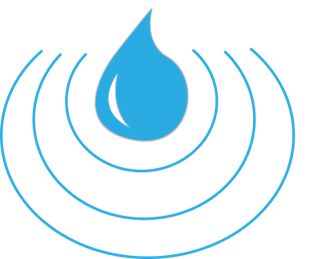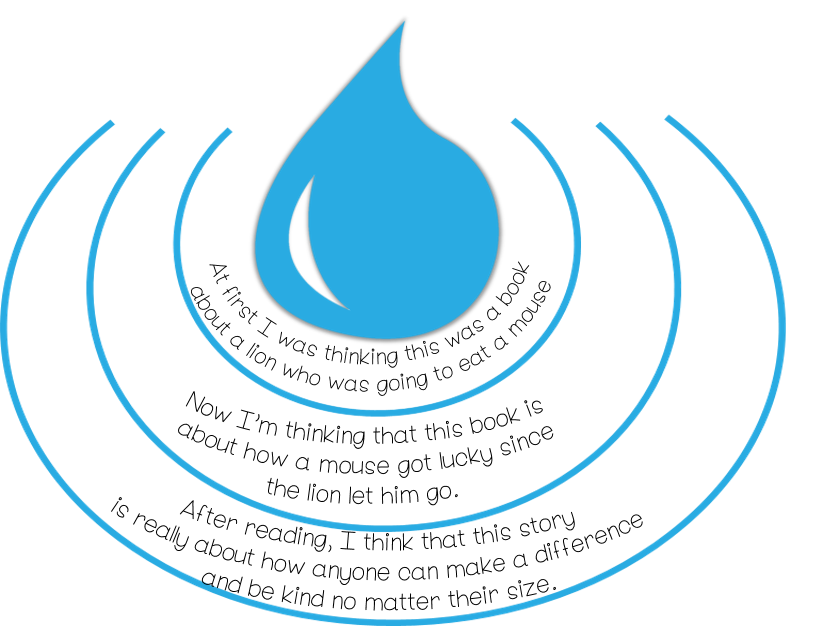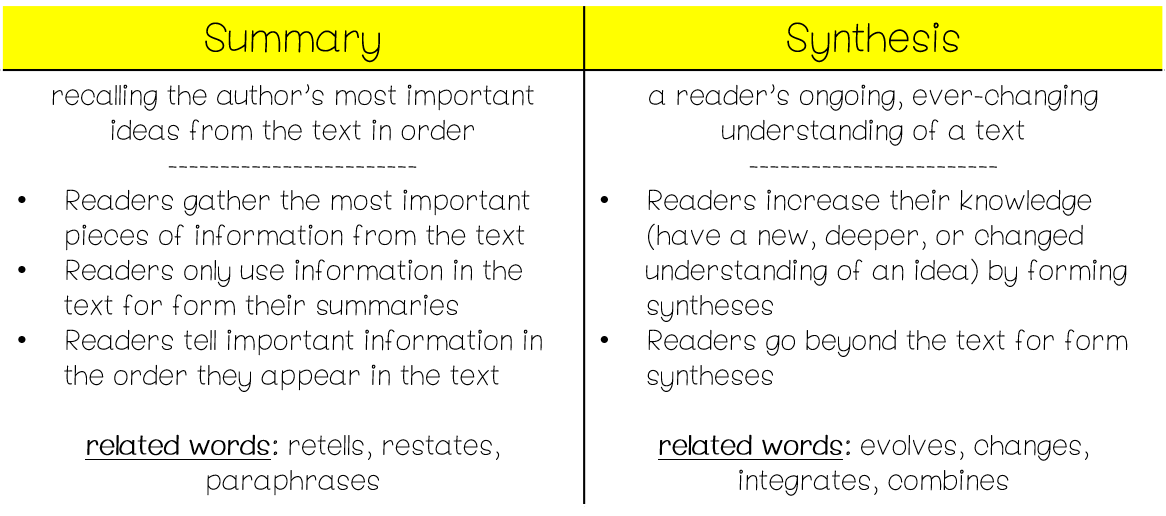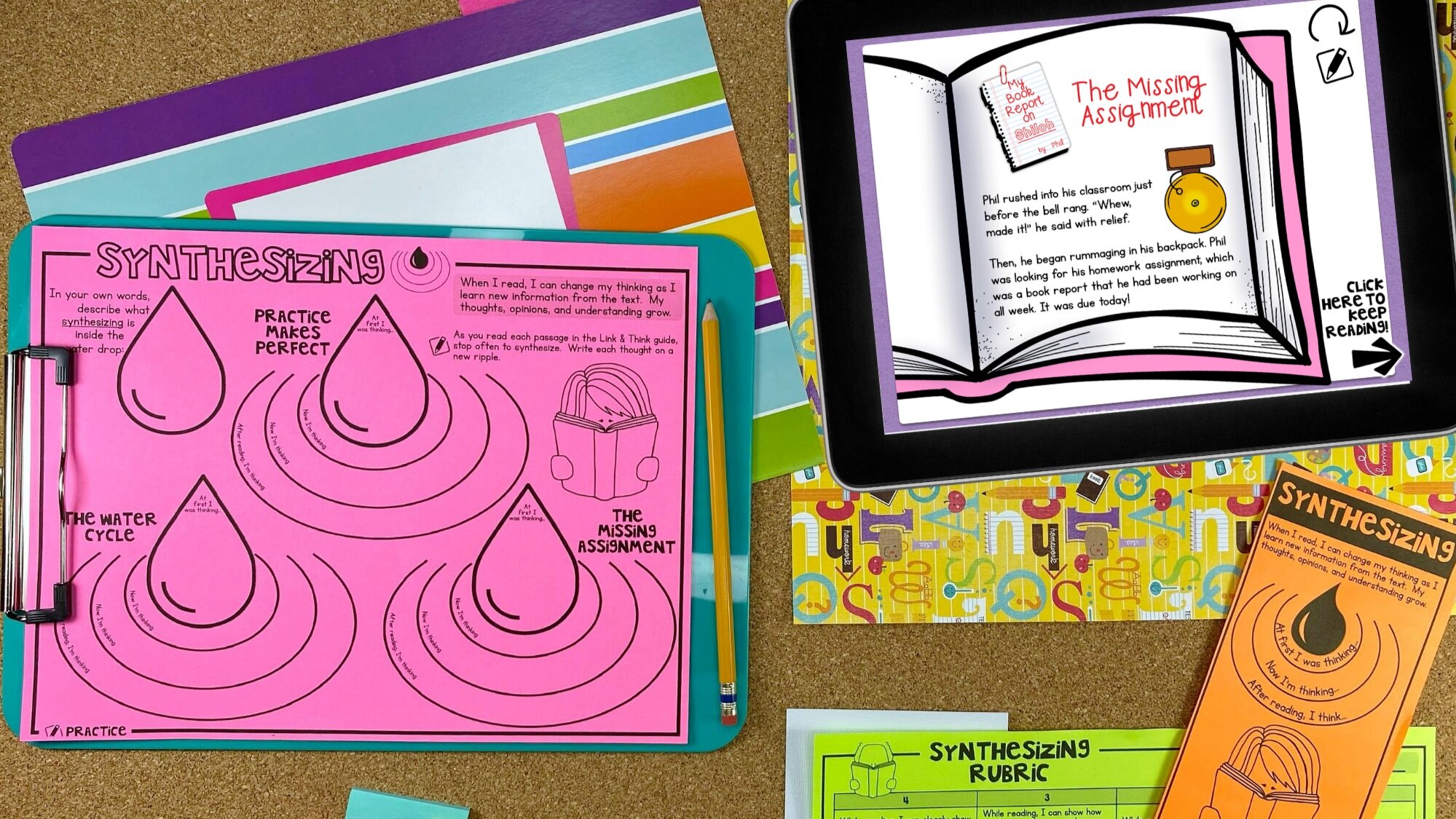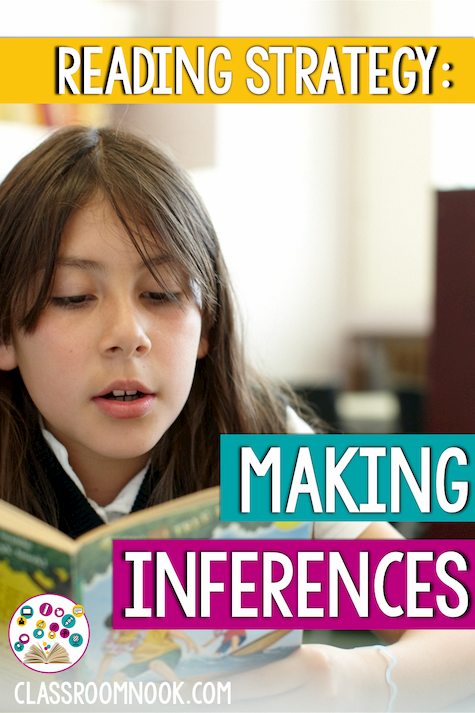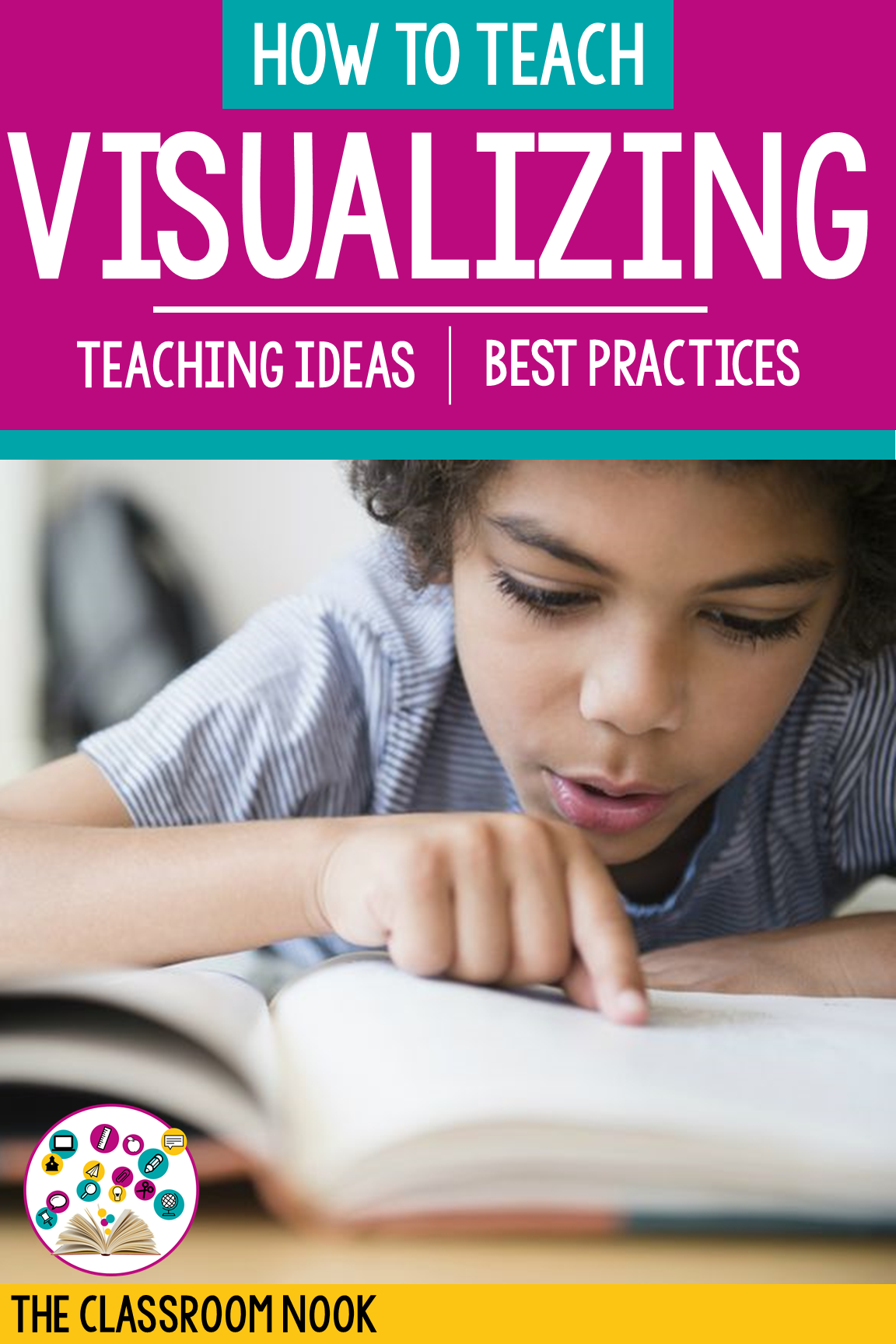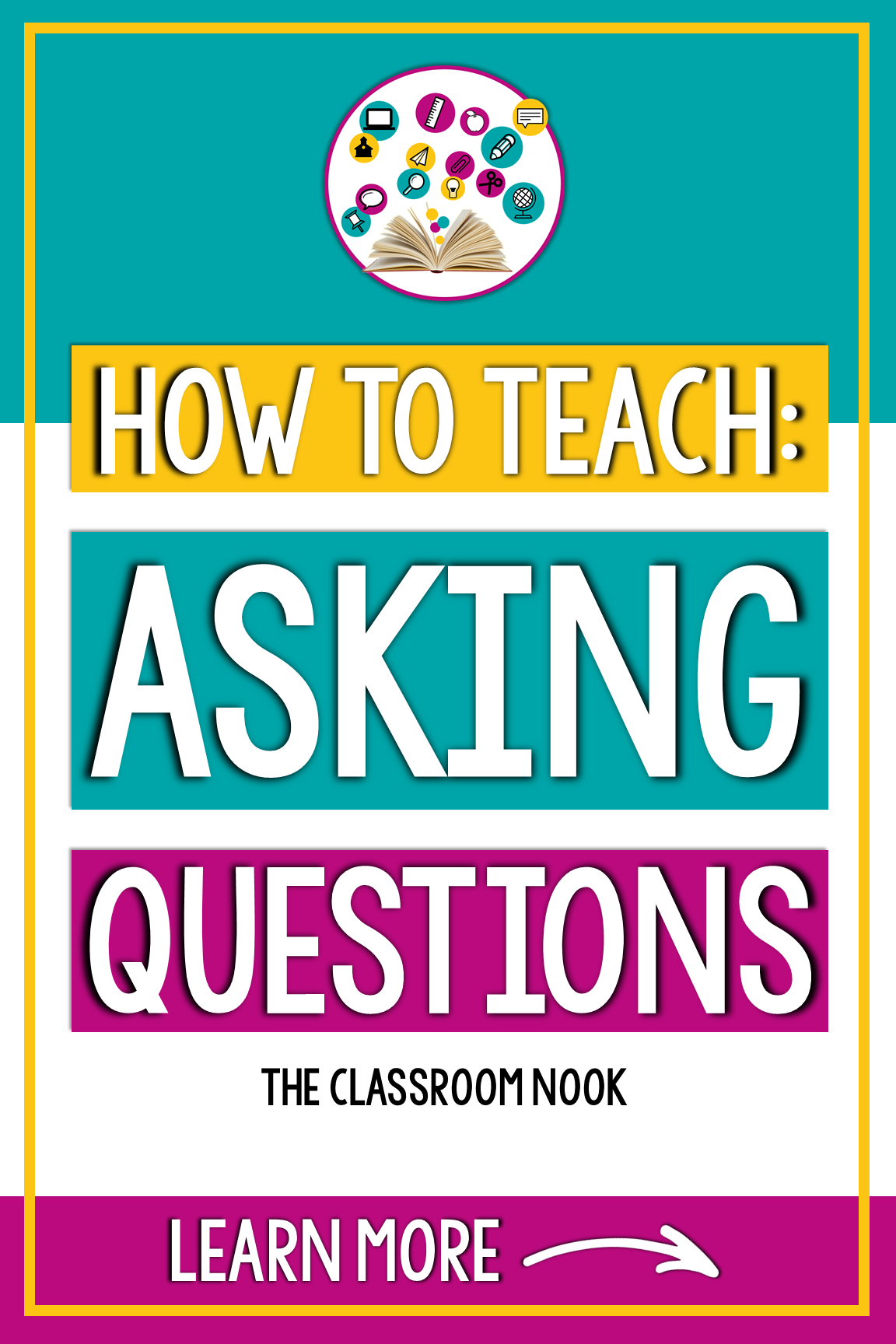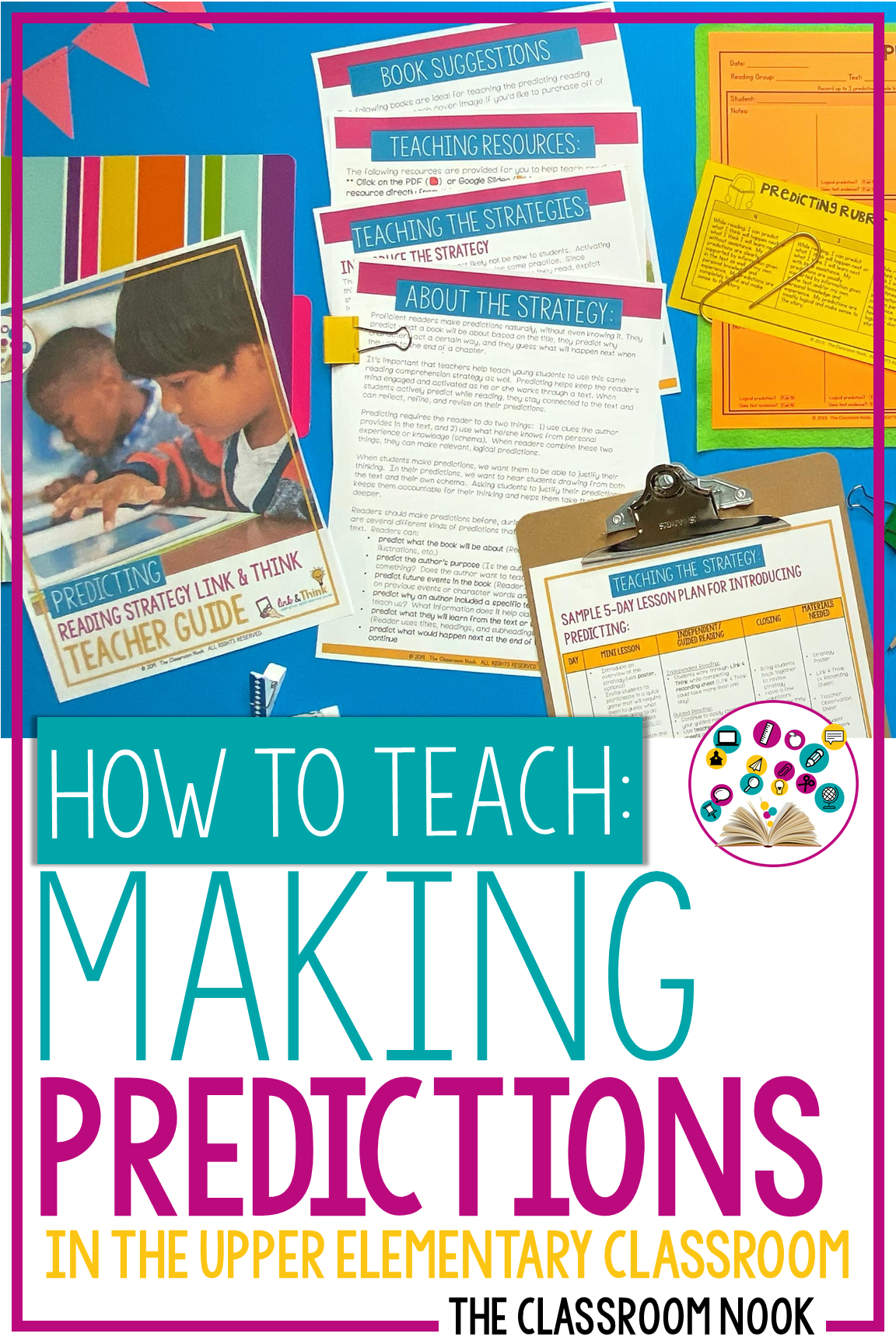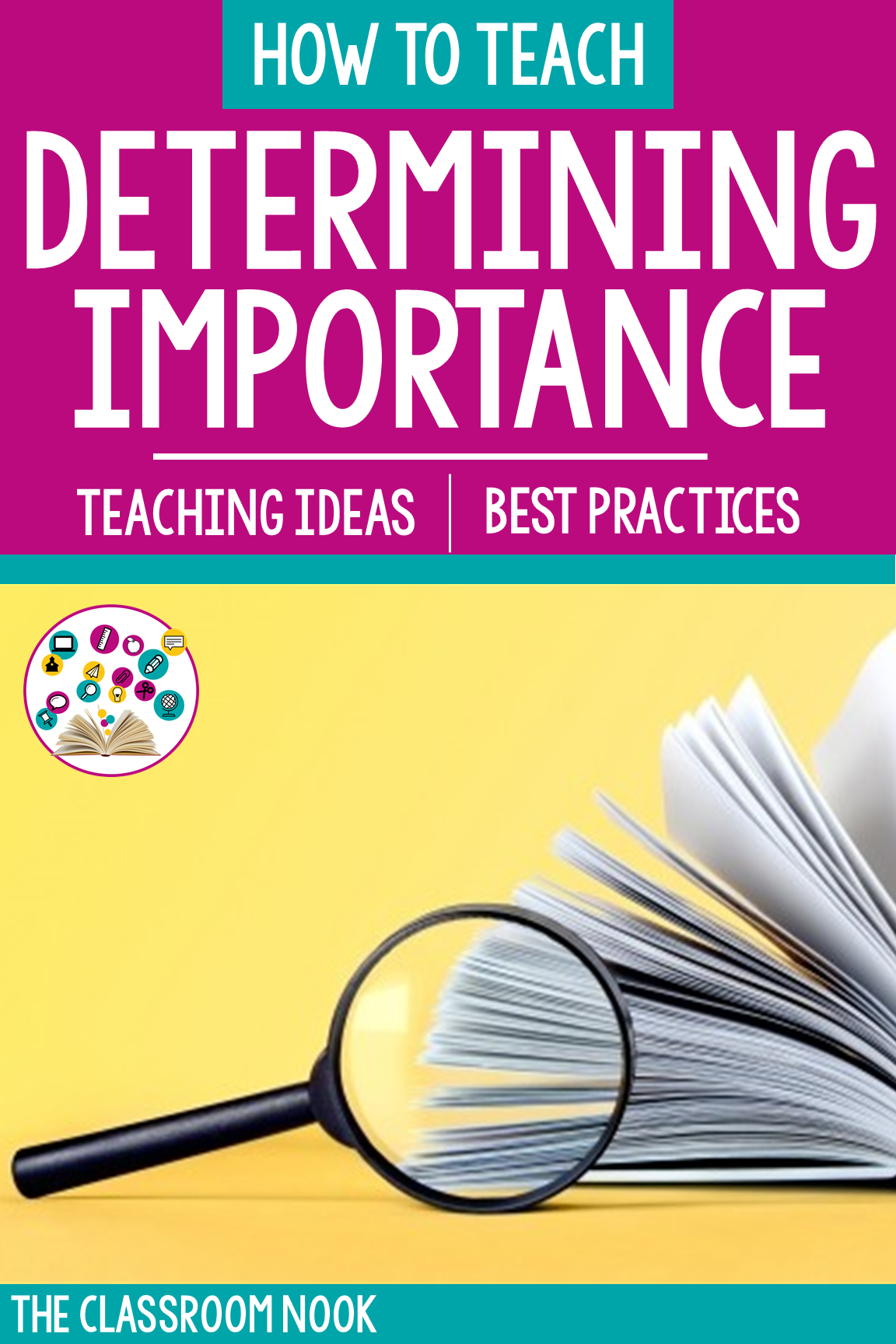Reading Comprehension Strategy Series: How to Teach Students to Synthesize While Reading
Love podcasts? Check out this post in the form of a podcast episode on The Classroom Commute Podcast!
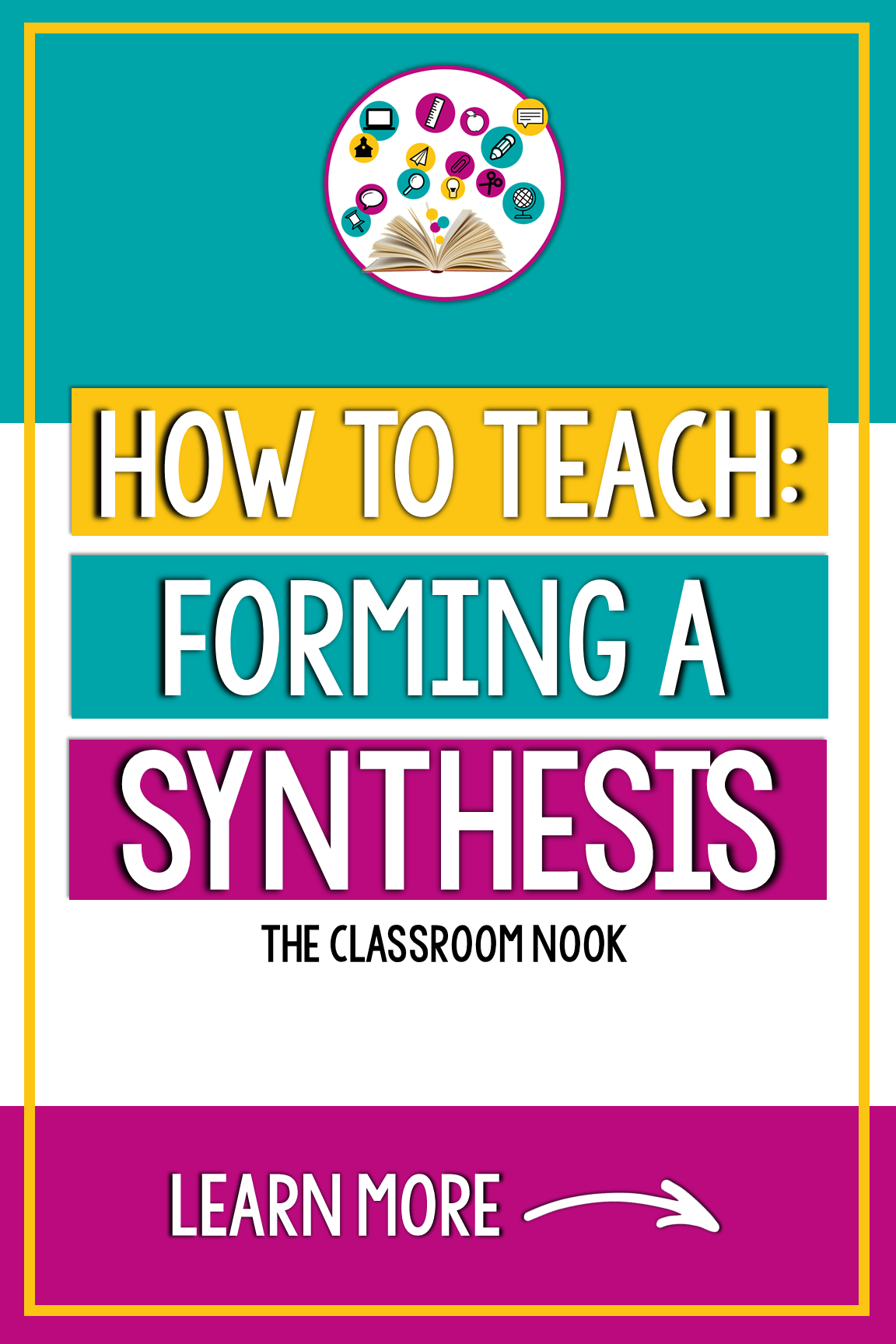
Synthesizing is one of the most challenging reading strategies for students to master, simply because it requires students to use multiple skills and strategies together.
In fact, the prefix “syn” means together. Synthesizing a text is the process of pulling together background knowledge, newly learned ideas, connections, inferences and summaries into a complete and original understanding of the text. When students synthesize, they are made aware of how their thinking changes and evolves as they read a text.
It’s important that we teach our students to synthesize. We want them to do more than just provide a retelling of a text that they read. Instead, we want them to internalize it and grow and change as thinkers because of the texts that they read. To do this, students need to stop often to evaluate and reflect on what they are reading. Through synthesizing, readers form new ideas and opinions.
Pssst…Want a super engaging and interactive way to have students practice synthesizing?
LINKtivity® Interactive Guides are EXACTLY what you need to make learning fun & accessible for all!
Get access to the Synthesizing LINKtivity® (+a growing library of LINKtivities!) inside of LINKtivity® Learning - an all-access pass to our entire vault of LINKtivities!
Below are the different categories within this post to help you jump to exactly what you need! Click on each category title to navigate there directly:
WHAT YOU NEED TO KNOW BEFORE TEACHING THE Synthesizing READING STRATEGY:
Before we spend time discussing in more detail what a synthesis is, let’s talk about what it’s NOT:
A synthesis is NOT the same as a summary. A synthesis can INCLUDE parts of a summary, or a retelling from the text, but it goes far beyond that summary or retelling. A summary may lead to a synthesis, but it’s not where it stops. Synthesizing requires the reader to take that summary or partial retelling and add in their own thoughts, experiences, opinions, interpretations and connections to generate a new, and bigger idea -- it’s going beyond the text. Even more, a true synthesis can blend and integrate ideas from across multiple texts to form new big ideas.
Synthesizing is an on-going process that builds and grows as a reader gets deeper into the text. Debbie Miller, author of Reading with Meaning (affiliate link) compares synthesizing to dropping a pebble into an area of calm water.
First there is a small ripple where the pebble enters the water. This represents our initial thinking as we begin reading. It’s small because we only have a small amount of information. However, as we read, our thinking grows and expands, just the like ripples grow bigger. We collect new information, form new thoughts and ideas, and evolve our thinking. Each new thought expands from the previous thought.
When we reach the end of a book, we are left with our final thought. This final thought has been informed and influenced by all that we have read and have previously read in other texts.
When thinking about synthesizing, experts have come to agree that there are 3 types of syntheses that students can make. A synthesis can form:
a new understanding, something a reader has not considered before until reading the text
a deeper understanding, becoming more aware or appreciative of an idea after reading a text
a changed understanding, thinking differently as a result of the text
In all three types, the result of synthesizing is an increase in knowledge for the reader. You can learn more about the 3 types of synthesizing HERE.
In fictional texts, readers synthesize to form a new, deepened or changed understanding about the character and events in the book.
In nonfiction, a reader’s synthesis is often the understanding that we develop when we study a topic through multiple books, articles, and multi-media resources. We put together everything that we’ve learned about that topic into a complete synthesis. For example, when we ask students to complete a research project we are asking them to synthesize the information that they have learned from multiple sources.
In any genre, syntheses are strongest when they are supported with textual evidence. We want students to be able to point out the details from the text that helped them form that new, deepened, or changed understanding.
Introducing Synthesizing to Students
As you introduce the concept of synthesizing to your students, consider some concrete examples that you can provide to your students. Like mentioned previously, comparing a synthesis to the ripples formed by a pebble is a solid example. This analogy helps students to understand that a synthesis is about how our thinking grows and changes over time. The ripple image is a visual reminder for students that our thinking starts small and grows over the course of a text.
As you begin your discussion on synthesizing with your students, have them imagine what it looks like to see a pebble dropped into the water. If possible, draw an illustration of this on chart paper, like shown on right.
Explain that at first when the pebble drops in the water, there is just a small ripple. Then, that ripple creates a new, larger ripple. That larger ripple continues to create an even larger ripple, and so on. Each ripple grows from the previous ripple, increasing in size, but they all stem from the original drop of the pebble. Help students understand that just like the growing ripples, our thinking grows as we read. When we first begin reading, we have an initial thought about what the book will be about, or establish first impressions about the characters (similar to the initial drop of the pebble). However, as we continue reading, our thinking evolves, changes, and grows as we learn new information. Like the ripples, our understanding becomes greater.
Modeling how to synthesize in reading
To model this strategy, begin by choosing texts that will lend itself to synthesizing. Fables are great when you are just starting since they are short and have a lesson to be learned that isn’t revealed until the end. As students read, they begin to uncover the moral of the story and their thinking changes, develops, and evolves.
Create an anchor chart using the ripple visual. Use phrases such as “At first I was thinking…Now I’m thinking… Oh, now I’m getting it… So this is really about… After reading, I think…” Writing these phrases on the ripples helps to illustrate how our thinking and understanding grows as we read. Here’s how you might use the fable The Lion and the Mouse from Aesop’s Fables (affiliate link) to show synthesizing.
Click HERE to view digital versions of Aesop’s Fables to display for your students.
After you model using the strategy with a fable, you may want to assign small groups of students another fable from Aesop’s Fables to work on together using a ripple graphic organizer that mimics your anchor chart. Have students record their syntheses and then share them with the rest of the class.
After a few more times of practice, you can have students try out the strategy with longer texts. For longer texts, you may need more than 3 “ripples” for students to complete their syntheses. Be sure to plan out ahead of time points in the text where you will be stopping to reflect and model how your thinking is changing as you read. You may want to add Post-it notes within the book as reminders to stop and talk.
As you spend more time on synthesizing, you may also want to provide additional analogies of what it means to synthesize. Different examples will “click” for different students. Here are a few other examples:
Russian Nesting Dolls
Compare synthesizing to Russian nesting dolls. If you have a set, bring it in to show your class. Explain how each doll fits inside another, growing bigger as you go. That’s how our thinking is when we synthesize; we build on our thoughts as we read.
Use the illustration of a caterpillar morphing into a butterfly. Simply stated, we go into a text as a caterpillar and come out of it as a butterfly. In other words, our thinking goes through many changes, just like the caterpillar, and we come out of a text with a new understanding, just as the butterfly is new.
Compare synthesizing to baking a cake. You begin with the cake mix (AKA: the text), and you add in ingredients like eggs, oil, and water (AKA: thoughts, opinions, experiences, previous knowledge…etc) to form something new: a cake (AKA: a synthesis)
Practice Forming a Synthesis
CREATE SIMPLE VISUALS TO REMIND STUDENTS TO MAKE CONNECTIONS:
As you teach students to practice synthesizing a text, providing simple reminders will help keep this reading strategy top of mind. When teaching any new skill in reading, I love to give my students a kid-friendly bookmark with some helpful tips for using a new skill or strategy. I created this reading strategy bookmark that you can provide your students with as they learn to use this new comprehension strategy
8 FREE Reading Strategy BOOKMARKS
Grab these FREE student bookmarks to help your students use reading comprehension strategies while reading.
There are a total of 8 bookmarks that explain reading strategy in kid-friendly language and is the perfect reference for students to use during independent or small-group reading time.
HELP STUDENTS SEE THE DIFFERENCE BETWEEN SUMMARIZING AND SYTHESIZING
As it was mentioned earlier, syntheses and summaries are related but NOT the same. You may find that as you begin using this strategy, students will likely confuse the two. In addition to spending time discussing and modeling what a synthesis is and how to form them, you may also want to spend significant time helping students to see the difference between a summary and a synthesis.
Create a T-chart as shown below to helps students identify the differences between a summary and a synthesis. As you read multiple texts, model both summaries AND syntheses of the same book to help students see the different.
USE DIGITAL LINKtivity® INTERACTIVE LEARNING GUIDES
New to LINKtivities? >> CLICK HERE
With such a tricky concept for most kids, having tailor-made resources specifically for synthesizing is extra helpful because it gives students guided practice.
I’ve created a LINKtivity interactive learning guide for such an occasion (duh!)
Here’s a sneak-peek at my Synthesizing LINKtivity®
Here’s how it works:
In the Synthesizing LINKtivity, students first watch a short animated video clip that quickly catches their attention with fun doodles and images. The clip introduces what the strategy is and how readers use it.
From there they read alongside their “virtual reading buddy” to see the strategy applied to a text. While clicking through the digital book, each time the student comes across a thought bubble, they click on it and are brought to a new slide in the LINKtivity guide to see what their reading buddy is thinking!
Then, to take their learning to the next level, students read 3 additional high-interest reading passages to practice the strategy on their own. In a similar fashion as they did with their reading buddy, students click through the digital storybook and stop to determine importance along the way. The students can record their thinking on a recording sheet that goes along with the LINKtivity.
Resources for teaching Synthesizing a Text
Want to get your hands on the Synthesizing LINKtivity®?
Grab our Synthesizing LINKtivity and start using this ready-to-go resource that includes:
a teacher guide
a student LINKtivity
a student recording sheet
a student-friendly rubric
OR - you can get access to the Synthesizing LINKtivity® PLUS all the other reading comprehension strategies inside of LINKtivity® Learning - an ALL-ACCESS pass to every single LINKtivity® created (INCLUDING all 7 reading strategy LINKtivities!)

